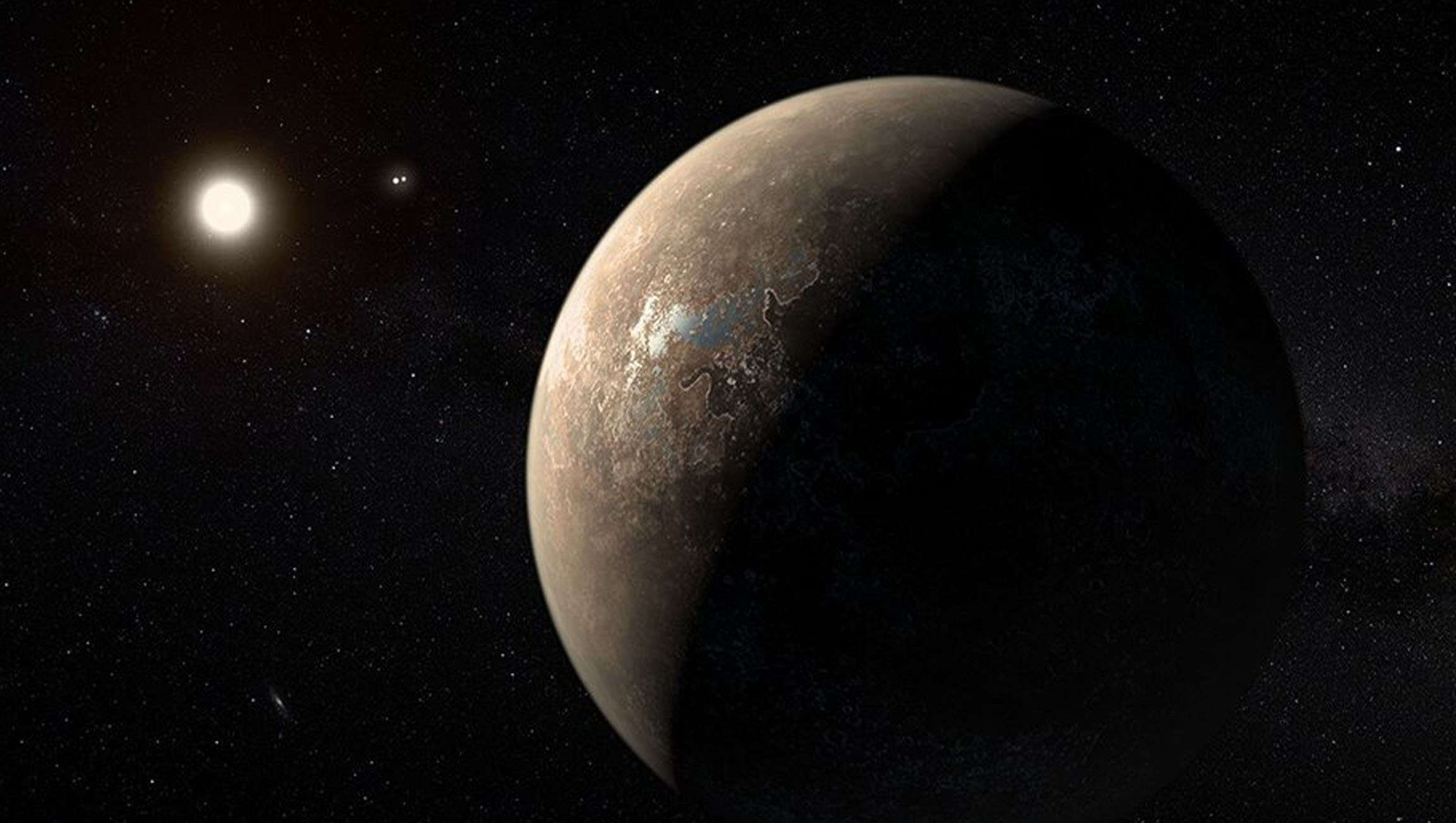Create a free profile to get unlimited access to exclusive videos, sweepstakes, and more!
The exoplanet closest to us could be crawling with life—except it gets blasted with lethal X-rays

While we’re pretty sure the moon is dead and Mars doesn’t look too promising for any life-forms (except that human colony Elon Musk is planning), we may have to look beyond our solar system.
Proxima b is the closest exoplanet to Earth and a contradiction in itself. Some astronomers have found it potentially habitable while others have blasted it for the intense X-rays it constantly gets pelted with by the star it orbits, Proxima Centauri. The planet was first detected 4 light years away by the HARPS spectrograph, but has finally been confirmed to be a real celestial body by an international team of scientists using the more advanced ESPRESSO spectrograph. Their research was recently published in Astronomy and Astrophysics. Now that we’re positive Proxima b exists, let the habitability arguments begin.
It sounds like Proxima b likes to live dangerously, since it orbits 20 times closer to its star than the distance at which Earth journeys around the Sun, but the unexpected thing about this is that the energy levels it receives from Proxima Centuari are close to what our planet gets. This has the scientists convinced that liquid oceans could exist at its surface temperature, possibly as vast as those on Earth, and the presence of water could possibly mean life—at least life as we recognize it. You never know what could be out there after methane-eating bacteria were found right here on Earth. Saturn’s moon Titan is covered in lakes of methane and ethane, so you can see where this is going.
Whether or not Proxima b could be a hotbed of life most likely depends on whether an atmosphere exists. It would need an atmosphere that could hold its own against 400 times the X-rays that reach Earth. Our atmosphere absorbs X-rays, which makes the planet safer for life, though it can be a pain for X-ray observatories trying to detect signals from deep space. X-ray photons, or high-powered molecules of energy, can go no further after they smash into individual atoms in our atmosphere that absorb them. Any that do make it to Earth have to dodge as many atoms as they would if they were trying to pass through a 16-foot-thick wall of concrete. Some insist that even an atmosphere like Earth’s would not be a strong enough X-ray shield. Without a protective enough atmosphere, life would be extinguished. Just look at what happened to Mars.
“Is there an atmosphere that protects the planet from these deadly rays?” researcher Christophe Lovis who is responsible for ESPRESSO’s scientific performance and data processing, asked in a press release. “And if this atmosphere exists, does it contain the chemical elements that promote the development of life (oxygen, for example)? How long have these favorable conditions existed?”
Not that there’s any guarantee that creatures which didn’t originate on Earth breathe oxygen and absolutely need water, but the conditions on our planet are what we have to go off of. Lovis and the other scientists who collaborated to make ESPRESSO’s Proxima b observations happen believe that those answers will emerge in the future as instruments continue to level up. The upcoming RISTRETTO spectrometer is being designed specifically to zero in on Proxima b and detect the light it gives off. HIRES (High Resolution Spectrograph) is another super-hi-res instrument that will be able to study faint objects in space and find out what their atmospheres are made of—if they have atmospheres at all.
Either of these instruments could tell us whether Proxima b is actually habitable. HIRES is currently being developed for use with ESO’s Extremely Large Telescope, which, when completed, will be the largest optical/near-infrared telescope ever.
For now, scientists will just have to keep debating whether or not anything could live on Proxima b until there is proof for or against an atmosphere.


























